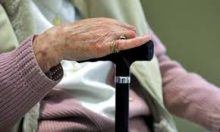
The decision around whether to get some home help or move to where you or a loved one can get support and care is never an easy one.
But from 1 July changes to the aged care system should give individuals and families a clearer understanding of the choices they have and the cost of getting home help or moving to residential care.
The provision of aged care services remains subsidised by the Government, but the focus of the changes is that those who can afford to contribute to the cost of their care should do so.
Home-based care
For people wanting to stay in their own home as long as possible, the Home and Community Care program is the simplest way for people to get help.
Basic services such as cleaning can be accessed following a simple assessment by an approved provider. The amount a person pays for this will depend on the service, the frequency and their financial situation. However, no one will be denied a service they need, based on an inability to pay.
Where a range of services are needed for a person to remain in their own home there is a more comprehensive Home Care Package.
Ability to pay
Someone on the Age Pension will be charged a maximum fee of 17.5 per cent of the basic rate of single pension, with a maximum set at $9.57 a day.
People on higher incomes may be asked to pay additional fees (limited to 50 per cent of any income above the basic rate of single pension).
Individuals considering the Home Care Package need an assessment by an Aged Care Assessment Team, arranged through a General Practitioner or within a hospital. They can also be found on www.myagedcare.gov.au.
ACAT assessments are also needed for anyone entering residential care.
Single fee structure
One significant change to reforms covering residential care is the removal of the distinction between low level care and high level care.
In addition, all residents will be subject to the same fee structure, known as an accommodation payment, which will depend on a resident’s assessable income and assets.
Residents with greater means will have to pay more for their ongoing care but caps will be put in place to protect those who receive care over a longer period.
Residents will be able to choose whether they pay for their accommodation as a refundable accommodation deposit (RAD) and equivalent daily accommodation payment (DAP) or a combination of both.
To help people determine whether they can afford a certain facility, all facilities must publish their prices on their website as well as a Government website myagedcare.com.au.
Keeping the family home
The income-tested fee for care is to be replaced with a means tested care fee to determine how much a resident can pay towards the cost of their care. Going forward a person’s home may play a greater role in the financial decision making around going into care.
Where someone going into care owns their own home and no-one eligible lives in it, a portion of its value – currently set at $144,500 and indexed to $153,905 – will count towards the assets test. Under the new rules many residents may end up paying a lower means-tested care fee if they keep their home.
The new rules apply to individuals who enter residential aged care on or after 1 July 2014, with existing residents grandfathered under the current rules. The rules are complex so please don’t hesitate to contact us if you would like to discuss your own aged care considerations or those of your loved ones.
ChallengerTech_Aged Care reforms
http://www.livinglongerlivingbetter.gov.au/internet/living/publishing.nsf/Content/Consumer-Directed-Care-Home-Care-Packages
http://www.livinglongerlivingbetter.gov.au/internet/living/publishing.nsf/Content/Consumer-Directed-Care-Home-Care-Packages
ChallengerTech_Aged Care reforms
This document contains general advice only. You need to consider your financial situation and your particular needs prior to making any strategy or products decision.